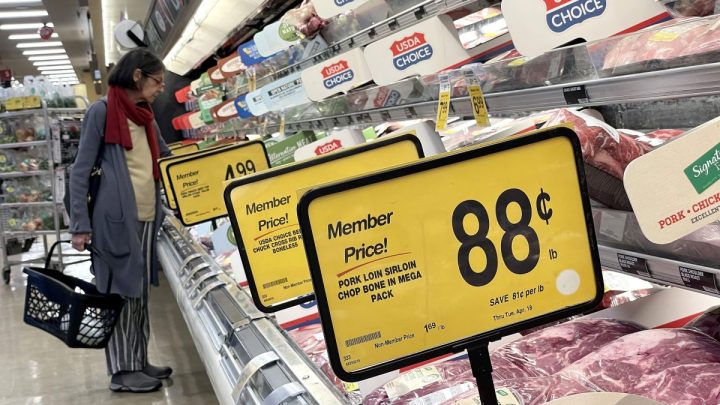
Prices are still rising, and consumers seem tired

Prices rose 4.9% year over year in April, 0.4% in just that month, according to the consumer price index. Yes, we are far below the peak of 9% last summer, but we are far above what would be considered normal.
And as prices keep rising and rising, it makes people wonder, at what point will consumers just not be able to take it? That’s actually a complicated question about consumer fatigue.
Inflation wears people down, and in some places, it’s starting to show.
“We are approaching historical highs in terms of revolving credit growth,” said Corey Tarlowe, a senior equity research analyst at Jefferies. People are putting more debt on their credit cards. In January, the annual growth of revolving credit was 15.6%, according to Jefferies’ calculations.
“The last time that it was anywhere close to that was in August of 1996,” Tarlowe said. At the same time, people are saving less. The savings rate was 9% pre-pandemic. It’s about 5% now.
“If you think about how that’s manifesting in terms of consumer behavior, well, it means consumers are gravitating much more to what they need and away from what they want,” Tarlowe said.
Consumers are going to places like Walmart and the dollar store more and buying less per visit. They’re opting for more generics over name brands, per Tarlowe. Retailers have been blasting out promotional discounts to lure in consumers.
“This is the highest increase that I’ve seen in the last three years in terms of promotions,” he said. And yet, inflation is still moderately — and stubbornly — high.
“The fact that consumers are proving more sensitive to higher prices will help bring down inflation itself, but it’s not sufficient,” said Preston Caldwell, chief U.S. economist for Morningstar Research. He said one reason people are still paying more for products is that, for many of them, they still can.
“If you have wages go up in line with product prices, a consumer’s real income is unchanged and there’s no reason for them to pull back spending necessarily,” he explained.
Caldwell said that while at first inflation was vastly higher than wage growth, the two are more in line now. So if workers get raises to afford higher prices and then the prices rise and they get more raises, they’re in this awful inflation loop. So how do you fix that? It’s not pretty, but one way is for the labor market to cool.
“When people have jobs, they are much less concerned about high prices,” said Michael Zdinak, an economist at S&P Global Market Intelligence. “If and when the labor market turns, these price increases we’ve seen in the last year are going to weigh on consumer spending really hard.” And, he said, really quickly.
There’s a lot happening in the world. Through it all, Marketplace is here for you.
You rely on Marketplace to break down the world’s events and tell you how it affects you in a fact-based, approachable way. We rely on your financial support to keep making that possible.
Your donation today powers the independent journalism that you rely on. For just $5/month, you can help sustain Marketplace so we can keep reporting on the things that matter to you.

















